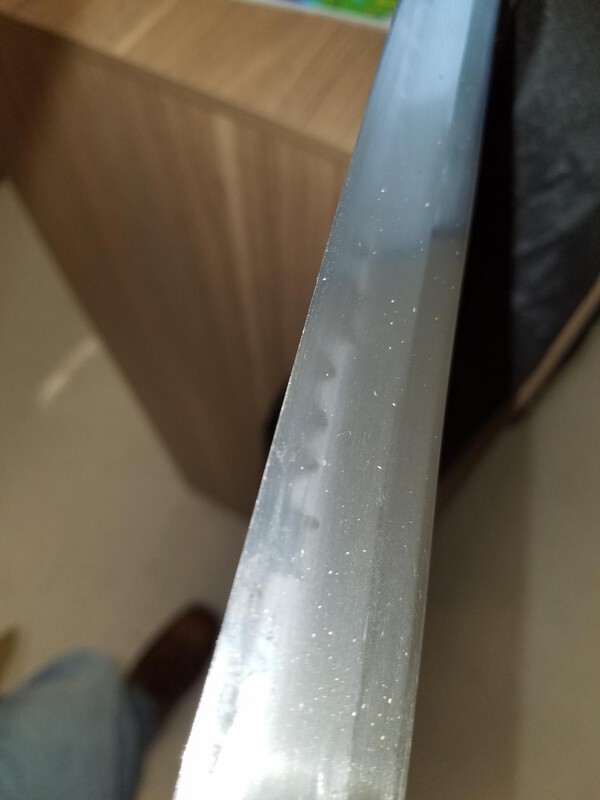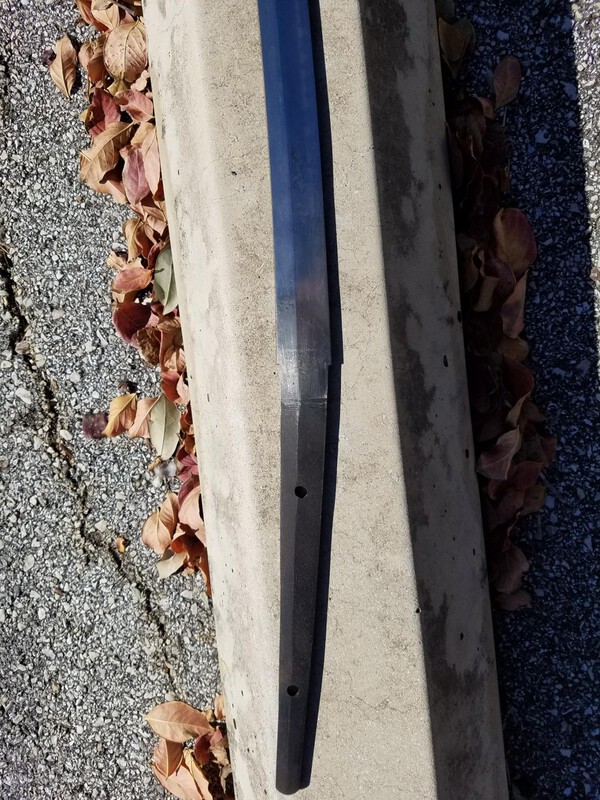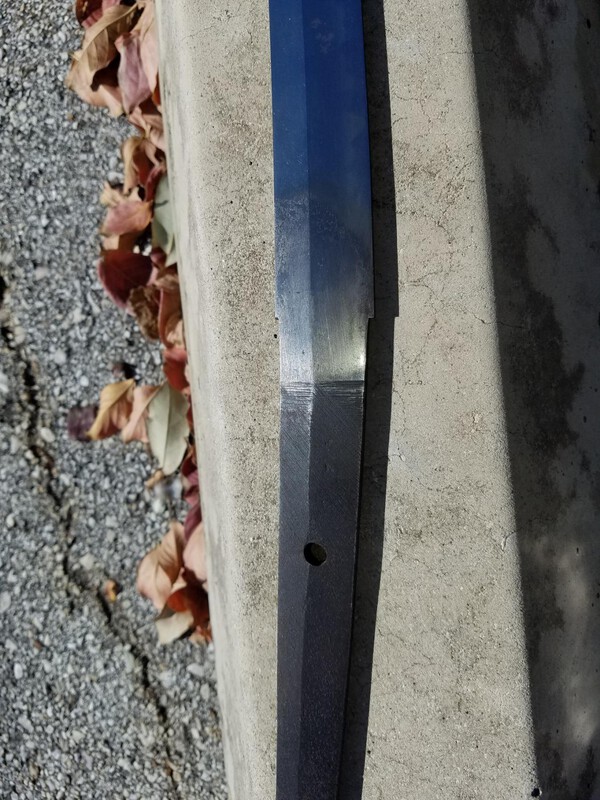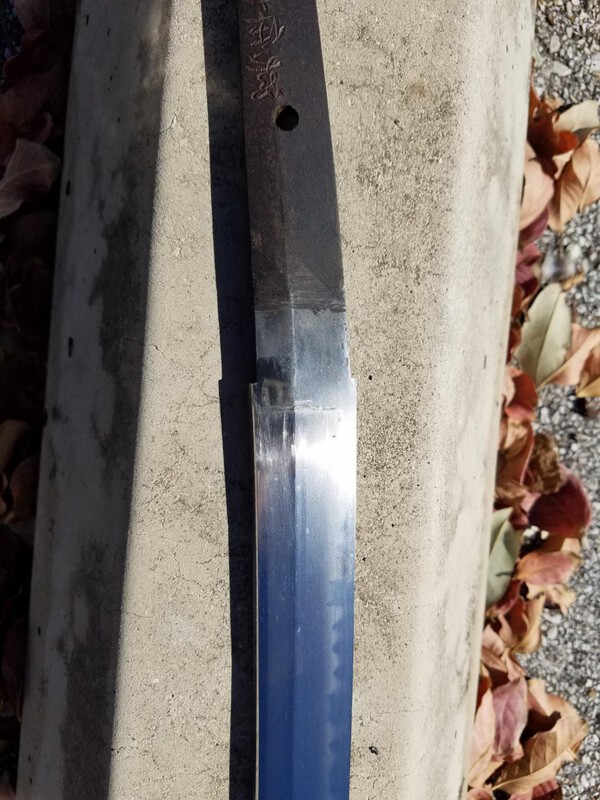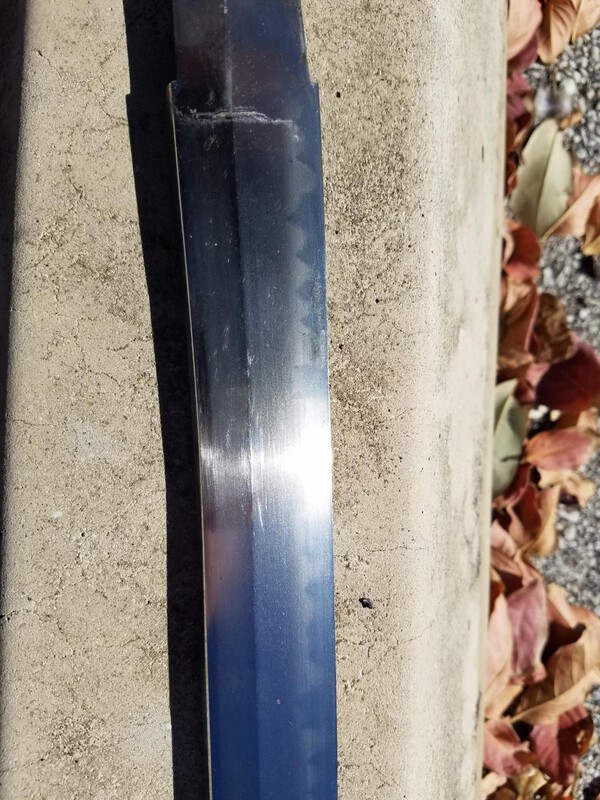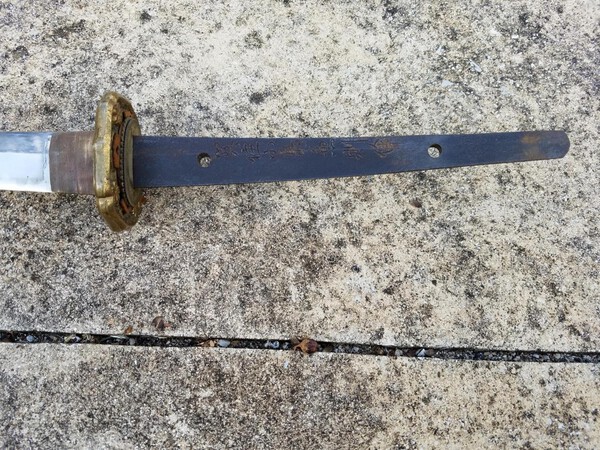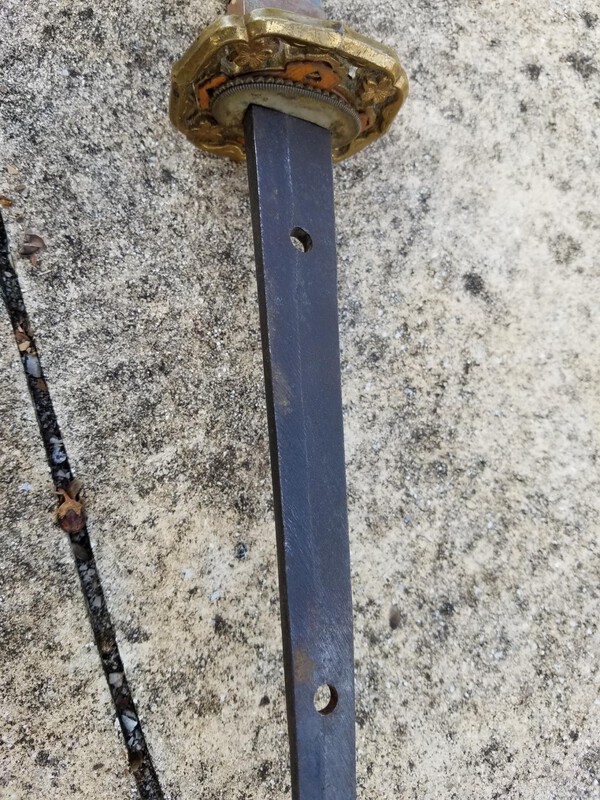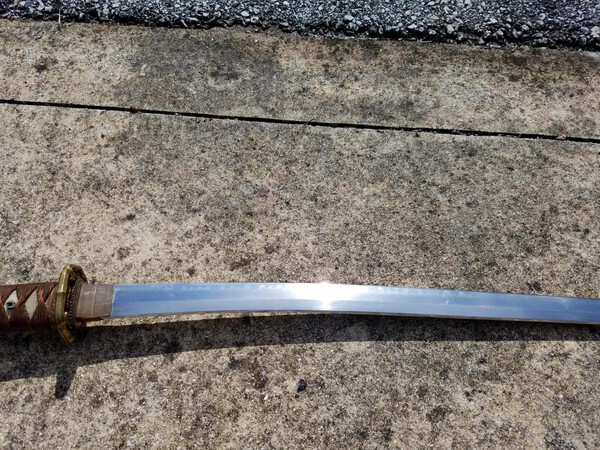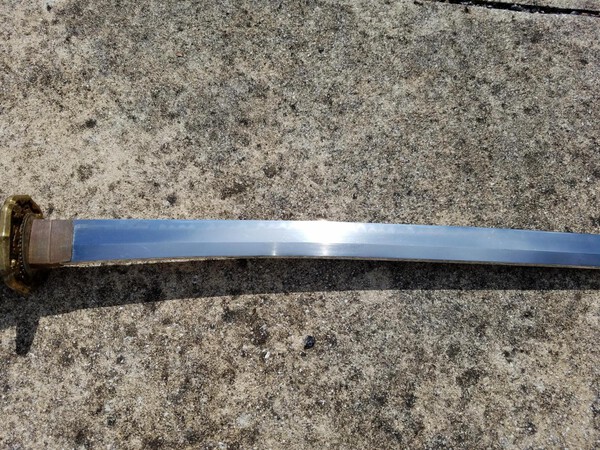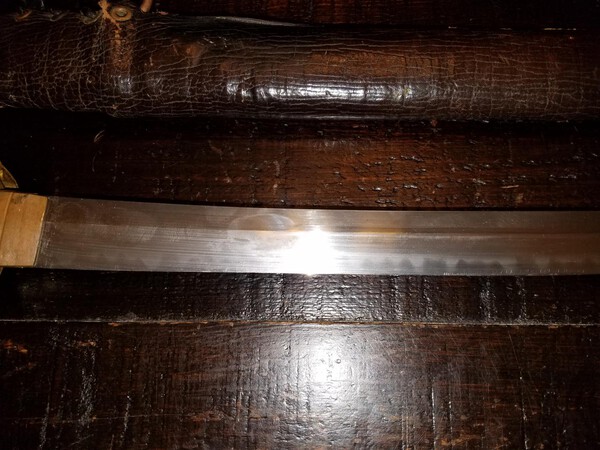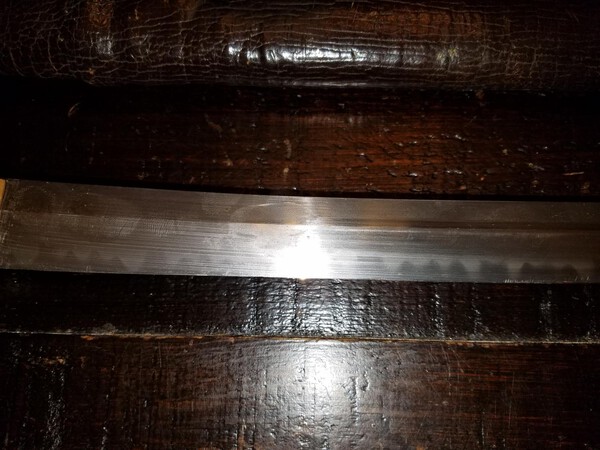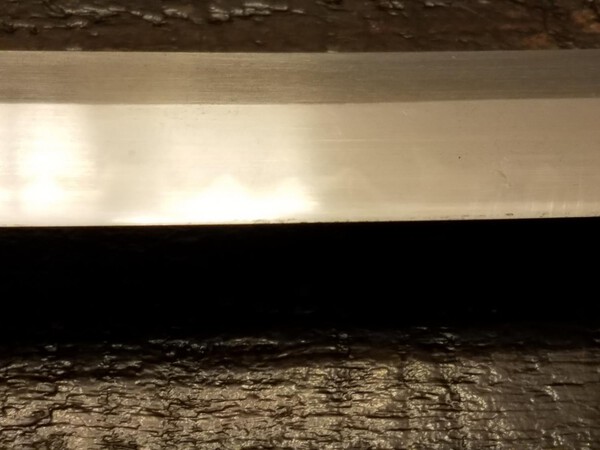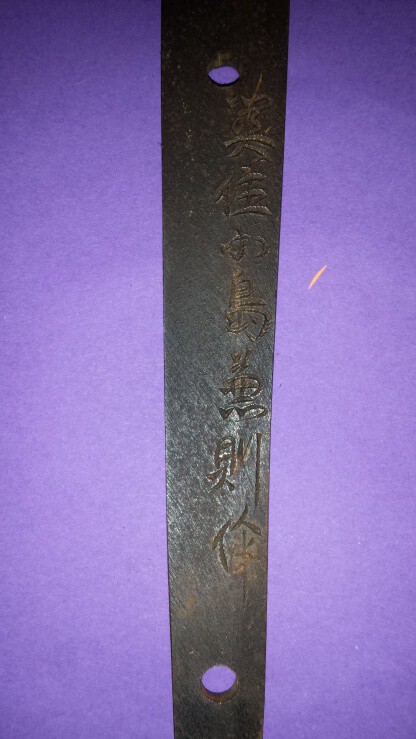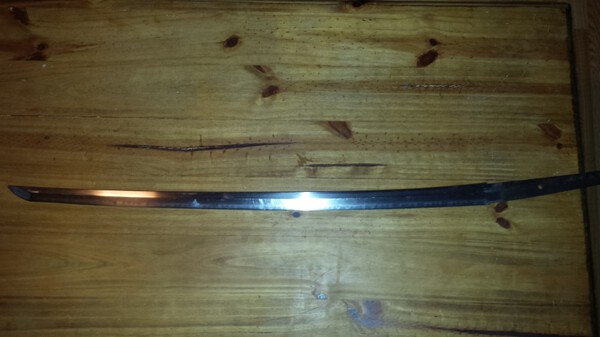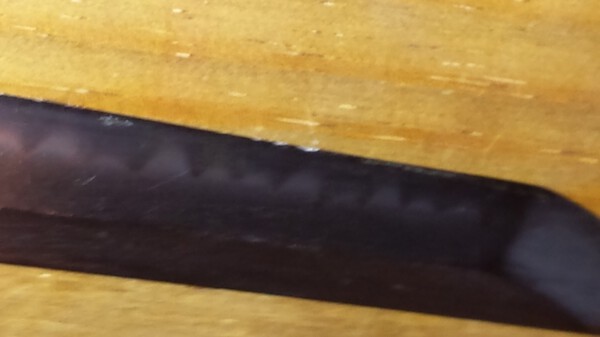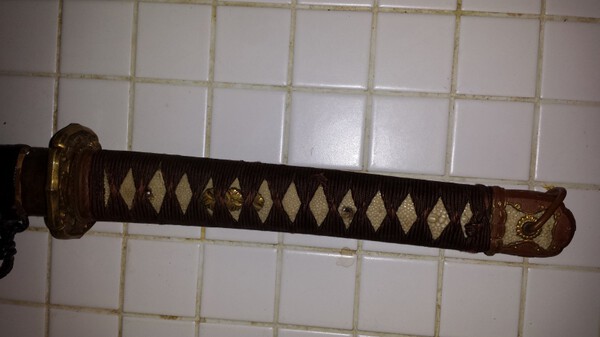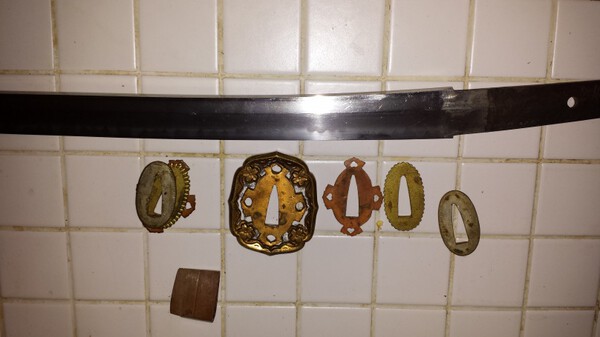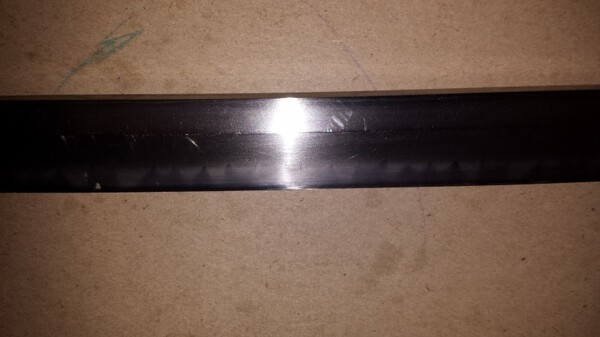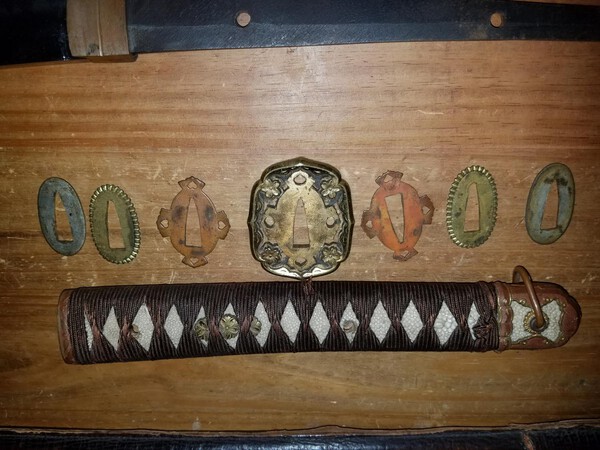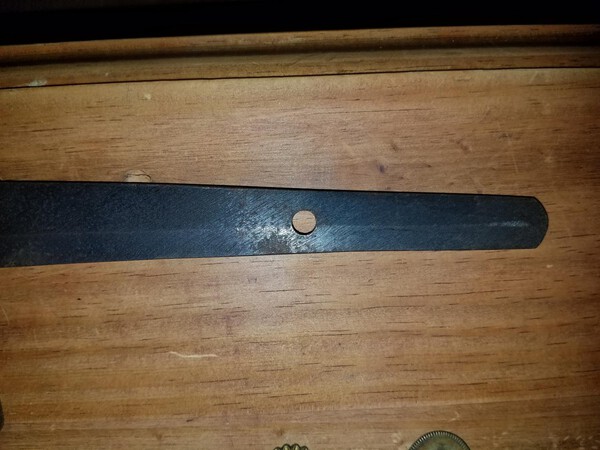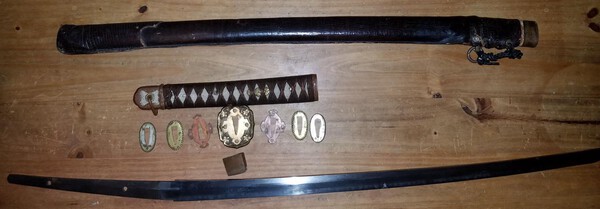-
Posts
17 -
Joined
-
Last visited
Profile Information
-
Gender
Male
-
Location:
San Antonio, Texas, USA
Profile Fields
-
Name
Hardy L.
Recent Profile Visitors
348 profile views
Hardy's Achievements
-

Polishing a Window into a Blade
Hardy replied to Hardy's topic in General Nihonto Related Discussion
A window into the blade. That is the term a togishi I spoke with used to explain polishing a small section of a blade in order to reveal the character of it hidden under a marred polish, corrosion, or what-have-you. -
I have a military sword, and it's probably a Showato, but there is a slight chance that it might be a more traditional gendaito. The sword's current polish obscures a lot of the blade's details. It is hard to clearly see the hamon, and any potential hada is impossible to make out through the scratches. The blade is covered in fine scratches, none of which look to be particularly deep. I don't want to waste a togishi's time, or a substantial amount of money, polishing a Showato. What is the best and most time/money efficient way to polish enough of a window into the blade to reveal the hada and hamon? I understand that I will necessarily be doing damage to the blade if it turns out to be a gendaito, but if it does turn out to be a traditionally made blade I have every intention of paying for an art polish (the sword has family history attached to it). I have some experience working with swords and knives. I've polished and performed edge work and reprofiling of non-Japanese swords (European, Chinese, Indian, Caucasian), including some antiques. I have experience with using stones, hand sanding, files, etchants, and powered belt sanders, grinders, and buffing wheels. I appreciate any insight the more experienced hands around here might offer, and I would prefer to not go into this blindly and do more damage than is necessary.
-
I think I'm probably going to have to find a subject matter expert in my area (central Texas) to confirm one way or another in person. I briefed some friends on the discussion here, and after they examined the blade they agreed that there weren't any dark areas visible on it, but they also agreed with the consensus here that the pictures make it look like there are dark spots. After spending half an hour last night trying to take clearer photographs (and using the superior camera on my wife's phone) I was still unable to capture a satisfactory image. I think the murky polish is at least part of the problem. If I angled the camera enough to make out the hamon, it ended up with a lighting situation which produced darker looking areas. When I attempted to shoot straight down at the hamon, it became so washed out that the hamon was barely visible. I'm not even a practiced amateur photographer, and I'm certain that I was some pretty idiotic mistakes in my attempts. All that said, I very much appreciate everyone's assistance here. I am at least a little bit more educated on the telltale signs of a non-traditionally fabricated nihonto. Cheers.
-
I don't see a black line over the hamon on my blade. That's why I posted the example image with the purple background as a comparison. The hamon on my sword is just white. The hada looks like fairly straight lines running the length of the blade, the poor state of the blades polish isn't helping matters.
-
As to the proposed dark spots in the hamon, I don't see anything like darker spots when I look directly at the hamon with my naked eyes (and I've been deliberately looking for telltale darker areas). I've tried photographing the blade in sunlight (as recommended above), and have gotten mixed results with errant reflection and brightness. Clearly your collective eyes are seeing something I am not in these photos. I included the first oil-quenched example photo I could find on this site, and then I tried to reproduce a comparable angle (while holding the sword in one hand and trying to manage my phone with the other). My photos still don't quite match what is visible to the naked eye, but they don't seem to resemble the example photo either.
-
@Stephen Would you mind explaining how you came to that conclusion? I'd like to understand why it's not a traditional nihonto blade. It doesn't have any markings suggesting it was mass produced. The mei is hand chiseled, and the smith is a recognized one with other blades of his sold inside Japan in recent years.
-
I recently inherited what I believe to be a traditionally made katana, though it has gunto fittings. These fittings seem to be of a higher quality than other antique gunto I've examined, but I'm no expert. The story I received regarding this katana is that a Japanese flag officer surrendered it to a Chinese general who was a friend of my great grandfather, and regular guest at his Texas ranch. Both of these men died before I was born, and I have nothing except hearsay stories from other relatives, a couple photos of the Chinese general, and some guestbook entries at my family's ranch. As I understand it, the mei reads, "Noshu ju Kojima Kanenori saku" (a big thanks to Juyo for assisting with that). I would appreciate any information you can share about this sword and the smith who made it. I've attached some photos of the sword in question.




